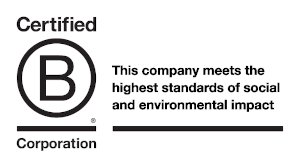Fashion is surely the most circular of industries. Right? Here’s my reasoning. Don’t throw anything away, it’ll come back into fashion. I’ve recently stopped wearing my George Cox creepers for the second time. The first time that I stepped out in them was the mid 80s. 501s, creepers, bootlace tie, collar caps on my shirt, over-sized 50’s suit jacket. My uniform. Then I realized it had become everyone’s uniform. So I stopped wearing it. I’m a bit fickle like that.
I started wearing the creepers again in around 2005, 20 years later. Leopard skin ones. All was well for about 5 years then I saw creepers in Topshop. Bloody Topshop – purveyor of flimsy trends, gossamer hopes and teenage dreams. So they went back into hibernation. I won’t throw mine away as they were made by the inventor of creepers, one of Northampton’s finest shoe-makers. I paid for the privilege of wearing them – around £200 per pair. They will last forever but the fashion industry doesn’t want them to last forever. They want them to last a season. I say the fashion industry – that’s really unfair. It’s a broad industry and includes creators of style and longevity like George Cox, Nigel Cabourn, Trickers, Vivien Westwood, Hiut Denim, Finisterre and newer proponents of long-lasting stuff like Blake, Stella and Alf, Pozu Trakke Adventure Carry, Bowndling, Sandstorm Kenya and a range of other new-wave old-schoolers. Even the top-end fashion houses like Prada, Stella McCartney, and Paul Smith are more concerned with longevity than you’d think they would be. They are however, skewed by shareholders who demand mega returns and rapid growth rather than modest returns and realistic growth. Fashion has always been a business. Of course. But with the rise of the instant brand – the desire to grow, saturate the market, take the cash and retire is very strong. Brands like Holister, Bench and Superdry have abandoned any style, creative kudos, or self-respect in return for chasing the dollar. And here’s the tension – money or respect. Brands are sold the lie that it’s hard to have both today.
There’s a human side to all this. As the recent disaster in Savar has shown, people die to make us look good for next to nothing (in every sense). What’s the first step that we need to take? Several things need to happen at once. There needs to be greater financial support for the UK manufacturing industry in the form of tax incentives, reductions in National Insurance payments maybe, wider use of the R&D tax credits possibly. There also needs to be a greater understanding of the true cost of cheap clothes. This is more difficult. This is a cultural shift that brings with it a financial cost. Who wants to pay more for less? Probably not the wider British public. But then again we are seeing a return to buying British, a growing re-shoring of industry, a growth in quality over quantity. But let’s be realistic. This is tough. This is where storytelling comes in. This is the good side of brand development. Tell great stories, sell the pursuit as well as the product, create your tribe, make beautiful and useful things, and sales will come. There is an interesting debate here around business models. The key to developing effective circular economy businesses is to re-imagine and re-build business models that embrace service, leasing, buy-back and refurbishment. In the UK Hiut and Nudie offer free repair of their jeans for life, Dr Martens sell a boot/shoe that is repaired or replaced for life, a bespoke suit is capable of being taken in and let out as you change shape.
In the UK we are widely reported to being within a decade of losing key textiles design and manufacturing skills forever. We churn out fashion graduates who either want to make lobster hats or become “buyers” (these people know the price of everything and the value of nothing, they demand innovation yet don’t know what it is, they are professional price-reducers rather than product finders – it’s sad). We need to reinvigorate our own market, excite customers, excite designers, and to inspire our best talent to make things again.
Don’t get me wrong, I love fashion. I yearn for the days when a fully grown man walking through London dressed as a pirate was a normal thing. It’s just that I’m frustrated with the temporary nature of fashion.
So where do we go? We need to make things here, in the UK again. We need to pay more for things. We need to demand quality over quantity. We need to decouple fashion and style. We need to be comfortable with looking great and having our own style rather than looking fashionable and buying someone else’s. We need to demand the best.
Only when this happens will we stop using clothes as a mood-lifter, as make-up, as a suit of armour, as a physical anti-depressant, and then maybe we will see a reduction in the unworn clothes we have at home. WRAP estimate that 30% of our clothes are unworn. £5 billion of clothing lies unworn in British wardrobes. £140 million of used clothing goes to landfill in the UK every year. It’s simple. Buy better, repair, swap, donate. Keeping things alive longer means buying better and looking after them.
We can’t afford to buy cheap clothes anymore.
Mark Shayler
Tickety Boo
Associate – Useful Simple Projects
@greenape



